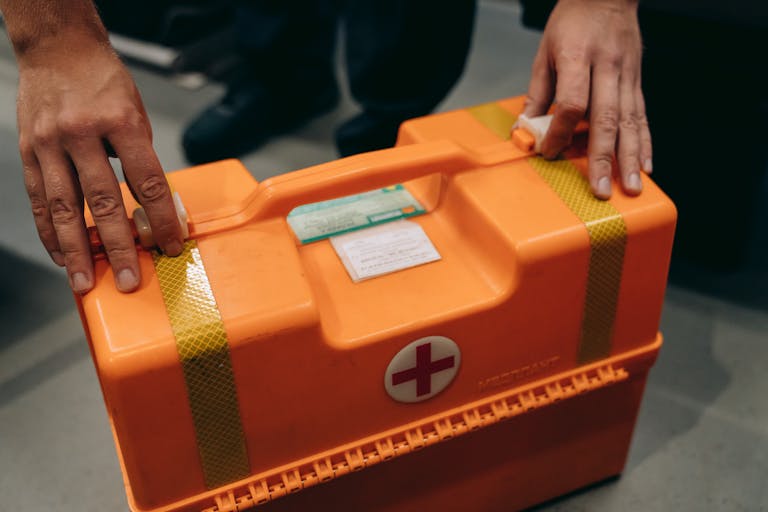31 May 2023, 15:38
Victorian Legislative Council, Melbourne
Rachel PAYNE (South-Eastern Metropolitan):
I move:
That this house:
1) notes the enormous utility of industrial hemp:
(a) in textiles, rope, food, oil, bioplastics, construction materials including hempcrete and fibre panels, insulation, animal fodder and biofuel;
(b) as a carbon dioxide reducing ‘carbon sink’, capable of absorbing more carbon dioxide per hectare than many forests or commercial crops;
(2) further notes that while there has been a rapid expansion in industrial hemp production nationally, as of April 2023 there are only six growers cultivating a total of 169 hectares in Victoria;
(3) requires the Economy and Infrastructure Committee to inquire into, consider and report, by 15 November 2023, on:
(a) issues, barriers and opportunities within the current Victorian industrial hemp industry;
(b) the current Victorian industrial hemp industry compared to other relevant jurisdictions;
(c) the constraints and confounders to expanding the industrial hemp industry in Victoria;
(d) the environmental benefits and costs of an expanded industrial hemp sector;
(e) how industrial hemp can be best utilised to assist Victoria in meeting emissions reduction targets;
(f) how the Victorian government could support industry development and growth across Victoria;
(g) whether the regulatory and licensing framework for hemp cultivation and hemp products may be streamlined to benefit the expansion of the industrial hemp industry, including but not limited to the introduction of a standalone industrial hemp act;
(h) key elements for the potential development of a hemp industry plan for Victoria; and
(i) any other relevant matters.
I rise on behalf of Legalise Cannabis Victoria to speak to motion 70 standing in my name. We are seeking the support of this chamber for a parliamentary inquiry to be conducted by the Economy and Infrastructure Committee into the potential for industrial hemp to sow the seeds of Victoria’s future.
Let us shine a light on this ancient, much misunderstood and incredibly versatile, resilient and sustainable crop and explore its potential. The hemp industry is not new. Hemp was one of the first plants to be spun into fibre many thousands of years ago – 8000 years ago in the case of the decorative rope in Taiwan. For centuries rope, fabrics and industrial materials were made from hemp fibre. Hemp was commonly used to make sail canvases. In fact the word ‘canvas’ is derived from cannabis. But when marijuana was banned as an illicit substance across much of the globe, industrial hemp was caught in the same web and its use dissipated despite it remaining so fundamentally useful. Fast forward to today, and we are seeing a hemp resurgence globally but also a great untapped potential.
Australia legalised industrial hemp production at the same time as Canada; however, in Canada the hemp industry is worth $587 million, with projections reaching $2.4 billion by 2030, while our national farm gate here in Australia is worth $15 million, so we can see that industrial hemp is a multimillion-dollar industry internationally.
Specifically bred for seed and fibre production, hemp is not psychoactive, and it has many varied uses that include food, oil, paper, bioplastics, animal fodder, biofuel, construction materials like hempcrete and many more. In fact hempseed is higher in protein than beef. In modern textile production the woody fibres of hemp blend well with many other fibre types. Hemp fabrics are stronger, more absorbent, more durable and provide better insulation than common cotton fibres. In fact my outfit today is completely hemp.
**Members interjecting.**
Rachel PAYNE:
Thank you. I think I look quite lovely in it too. As I was putting it on this morning, I discovered from the labelling that it also has a UV protectant, which is pretty amazing for the Australian economy and climate.
I also just want to talk a little bit today about how this morning I hosted a few of the hemp industry’s greatest. We have had some people here who are producers and innovators in this industry, who were able to showcase things like hemp carpet and hemp fibre and fabric. We had part of the plant here which shows you the stalk and that the outside of that material is a strong fibre and inside of that are the hurds, and then you obviously have seeds, so the whole plant can be used. It is so durable and robust and grows within 100, 120 days. In fact one of the producers that we had here today could guarantee that within 100 days you would have enough fibre to build a house. When we are talking about the fact that an industry is completely shutting down, when it comes to old-growth forests, I think that we can offer a viable alternative, and I will talk more about that in a little while.
Let me come back to hempcrete, because I am really excited by hempcrete. It is an incredible and very durable product, but it also offers a future for sustainable building. Hempcrete is recyclable, it is non-toxic, it is fireproof, it is biodegradable, it is mould and humidity resistant and it has excellent acoustics. One of hempcrete’s most exciting features is the way it is crack resistant under movement. Now, as we have just experienced another earthquake, I dare say that we might be exploring new alternatives in building and construction, particularly around earthquake-prone areas.
Just going back to that point about it being fireproof, the resistance of hempcrete means that for 4 hours it can withstand 1800 degrees Celsius temperatures. Australian bushfires are devastating to communities, and to offer an alternative building material that can provide that assurance and may even result in your house still standing after a fire has been through your property is pretty impressive. It is something where we should really be pushing forward and investigating all the opportunities that we have here, particularly as we have a housing shortage and we are having changes around the forestry industry.
Hemp also has immense environmental potential. Hempcrete uses minimal water and does not rely on pesticides, making it a popular and economical choice for building and construction. The environmental benefits of industrial hemp do not stop there. It is capable of absorbing more carbon dioxide per hectare than any forest and almost any other commercial crop. Not only is hemp a super absorber of carbon dioxide, it is a replenisher of soil. It also grows at an incredible pace. As I mentioned before, it takes 120 days to reach harvest. Once it is ready for harvest, 1 acre of hemp can, for example, produce just as much paper as double the amount of much slower growing trees, and it gets there in a much quicker time frame. It is hardy and resilient. Hemp can grow on land unsuitable for other crops and can weather many environments, making it a potentially powerful plant in the Victorian climate.
We acknowledge the work of the Victorian government on climate action and emissions reduction in Victoria, and we hope that industrial hemp can be a powerful tool for the fight against climate change, as hemp’s rapid growth enables it to sequester carbon at a rapid rate.
Just on the point that I touched on earlier around the government’s announcement to end native logging in Victoria, I know that many of my colleagues have been very impassioned by this discussion this week. But what I am trying to bring here is an opportunity. Fibre production can pivot. We do have an opportunity to consider industrial hemp as a viable alternative. With hemp, our state can meet the growing need for building materials and fibre pulp. Broad support for this industry will help us kickstart a new era in Victoria’s fibre future with a boost to industrial hemp. All around the world we see the hemp industry re-emerging and flourishing, but we in Victoria are really lagging behind. This can create jobs, it can stimulate the economy and it will support the environment. With the immense versatility, resilience and sustainability of industrial hemp in mind, its rapid expansion nationally and internationally is not much of a surprise. What is a surprise is that despite the growth and versatility of this industry elsewhere, right now in Victoria there are six growers cultivating a total of 169 hectares.
At Legalise Cannabis Victoria we have had the opportunity to meet with industry groups and a number of stakeholders in Australia’s agricultural and hemp industries. We have heard that Victoria has immense potential for an expanded industrial hemp industry but also that this industry and its immense potential are overlooked, undersupported and suffer from a confusing regulatory environment. We know hemp has huge utility and versatility, so what we are asking the committee to find are some answers to some important questions. How does the Victorian industry stack up? Where are the barriers? How big could a Victorian hemp industry become? Can it help us meet our emissions reduction targets? Should we be cutting the red tape? Should we be incentivising investment via a grant scheme or something similar? These are important questions that we believe are best answered by a parliamentary inquiry to expand on the work of the hemp task force in the last term of government.
I just want to say thank you to everyone who has made a contribution today and probably just go through and summarise some of the fantastic contributions that we did receive.
Let us examine what other jurisdictions are doing and hear from the experts. Let us find out what an expanded hemp industry could mean for the Victorian economy, Victorian jobs and Victorian emissions reductions. Given industrial hemp’s huge potential, seemingly untapped in Victoria, let us see if we can sow the seeds for Victoria’s future.
** The following Members of the Legislative Council continued to speak on the motion **
1. Jacinta Emacora, Western Victoria
2. Georgie Crozier, Southern Metropolitan
3. Michael Galea, South-Eastern Metropolitan
4. Bev McArthur, Western Victoria
5. Sarah Mansfield, Western Victoria
6. David Ettershank, Western Metropolitan
7. Aiv Puglielli, North-Eastern Metropolitan
**Closing remarks**
Rachel PAYNE:
I just want to say thank you to everyone who has made a contribution today and probably just go through and summarise some of the fantastic contributions that we did receive.
Particularly my colleague Ms Ermacora really highlighted in a fantastic summary the nutrient benefits of hempseed. I do suggest, if you have not tried it yet, that you make sure you do put it in your smoothies. It is very, very good for you – very high in protein. She also went through the building materials and, as we discussed, hempcrete and the sustainability of the future of hemp.
Just in response to Ms Crozier’s comments – and I know my colleague David Ettershank has made some comments, and I totally agree with you. You have hit the nail on the head in the way of ‘off the back of the task force’. There has been no indicator that we have ever hidden that there has already been a task force, but as my colleague Mr Ettershank highlighted, that task force only produced an interim report, then the task force was dissolved. There is no question that that work has created such a body of work, and we obviously want that work included, but we just need it finalised so that we can get to a position where we are looking at how we can create legislative reform to make this industry flourish.
Mr Galea, I would love to thank you – a colleague from South-Eastern Metro – for reviewing the future direction of hemp and also highlighting that hemp is in its infancy. We do have an opportunity here to really grow the industry, and I believe that this inquiry will, off the back of the work of the task force, come to that conclusion.
Mrs McArthur, interestingly, obviously had a few things to say, but as I can reiterate, the Victorian Farmers Federation do support it. There are a lot of farmers out there very interested in hemp, but their biggest complaint is that the regulation is too strict, it is too complicated, there is too much red tape and there is too much burden on them trying to activate their excitement in this industry. I also just make the point that we did discuss this with colleagues of Mrs McArthur, and it was taken to the party room and the shadow minister replied, so I do know that there was that dialogue there.
Ms Mansfield highlighted the growth, yield and regeneration and the importance of regional Victoria being front and centre in this conversation, and obviously the environmental benefits are something that we can all agree on on this side of the chamber.
I would also like to thank my colleague Mr Ettershank, who talked about the specialised equipment for production that we need and highlighted the fact that we are exporting raw materials for production. Again, there is a real opportunity here for there to be a viable industry, and there is a lot of interest in investment in Victoria.
Finally, Mr Puglielli, I would like to also thank you for your contribution and for highlighting the stigma that hemp is subject to and the fact that young people do get it. We do. We do want this to be a part of our future.
Thank you, everyone, for your contributions. I appreciate the support.
**Motion agreed to.**
[ENDS]





